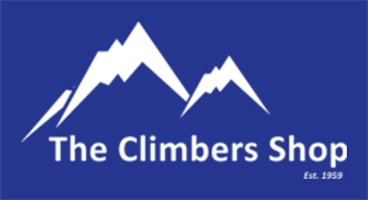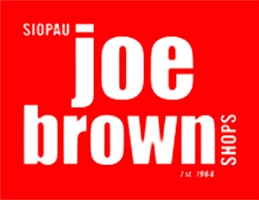Ski Touring Equipment Advice
The ski touring market has been developing really quickly in the last few years, putting all sorts of new types of skis, boots, and bindings on the market. This gives us a very confusing choice and I am going to try and give some direction on which type of equipment is best for back country skiing.
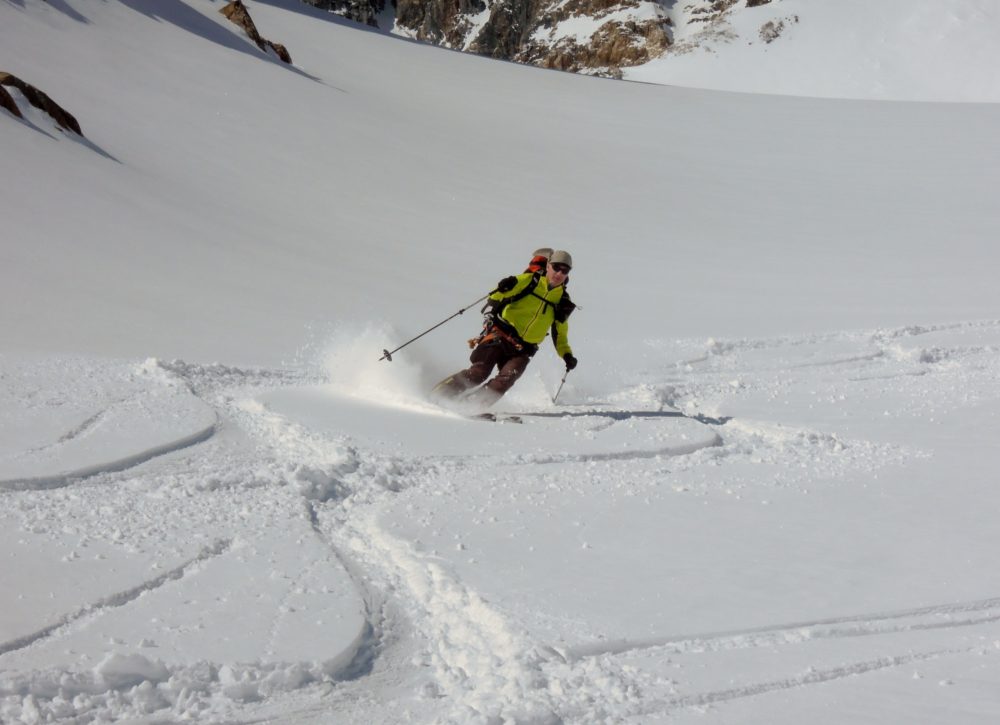
Some skiers have a whole quiver of different types of skis and their choice of skis for the day will depend on the current snow conditions. I prefer to have one set of skis to suit all of my backcountry outings. It is a compromise but also a simple solution and if you have made a smart choice with your ski touring equipment then it will serve you well during any day on the slopes.
Boots
As with all footwear comfort is the most important factor. To find the correct fit you should try on the outer shell on to see if there is the correct amount of space at the heel for the inner boot to fill, this should be about a fingers width. Also make sure that as well as being comfortable you have good padding for the shin to push on to the boot, this padding should be stable, firm but not too squishy. There should also be no or only very slight heel lift. I find that the thermal moulded inner boot is a must for comfort and performance. They really take our all the excess space in the boot so there is a great foot to boot connection. I use the wrap round model as it gives extra padding around the shin; the lace up versions with a tongue are lighter but don’t give as much as a comfort and control as the wrap around versions. Please see Intuition Liners for more information. A custom fit inner sole can also add comfort and performance to a ski boot and these are usually purchased when you have your thermal liners customised. There are three categories of types of boots to choose from depending what style of skiing you prefer. The light weight ski randonee racing boot, mid weight ski touring boot and downhill composite boot.
1 The lightweight ski boot is a very cut down boot which is perfect for walking (racing) uphill but it’s downhill performance cannot match the heavier weighted boots. This style of boot is best combined with a super lightweight binding and ski, both of which are inappropriate for a lift based off piste day or multi day ski tour where varying snow types will be encountered. Dynafit Eva, Scarpa Alien and La Sportive Syboug are current versions of this style of boot. These are not recommended for general ski touring.
2 The mid weight ski touring boot gives us a boot light enough to be able to ascend any alpine ski touring day and also a boot to give sufficient performance to enjoy any big lift based off piste day. In fact, I prefer the soft performance of these mid weight ski touring boots to the harder downhill ski boots and you can take a lower more stable stance on the ski. This style of boot gives a great general purpose ski boot which should serve you well in most off piste ski outings. As this style of boot has a vibram sole it must be used with a ski touring binding and not a downhill binding as the vibram sole will not release in a downhill binding. So if you want to use a carving ski on the piste then you cannot use these boots otherwise there are no other limitations.
These boots should be comfortable enough to walk in and many alpinists use these to climb alpine routes in winter when a ski approach is needed. The Dynafit TLT6, Scarpa Maelstrale and La Sportiva Spectre are current versions of this style of boot. I am still using an old pair of Scarpa Spirit 4 which although slightly heavier than the new models are very comfortable, easy to put on (no complicated tongue system) and give a superb ski. Please note some of the lighter boots in this category such as the Dynafit TLT6 cannot be fitted to a non-pin binding as the front lug is too small.
3 The composite downhill ski boot is a boot with an interchangeable sole to allow a vibram “walking” sole to be placed on them for use in ski touring bindings and a slick plastic sole so that they can be used with a downhill binding. Their performance is very close to a downhill ski boot but for ski touring they are too heavy to cope with many of the longer ski touring days out. These are not recommended for general ski touring.
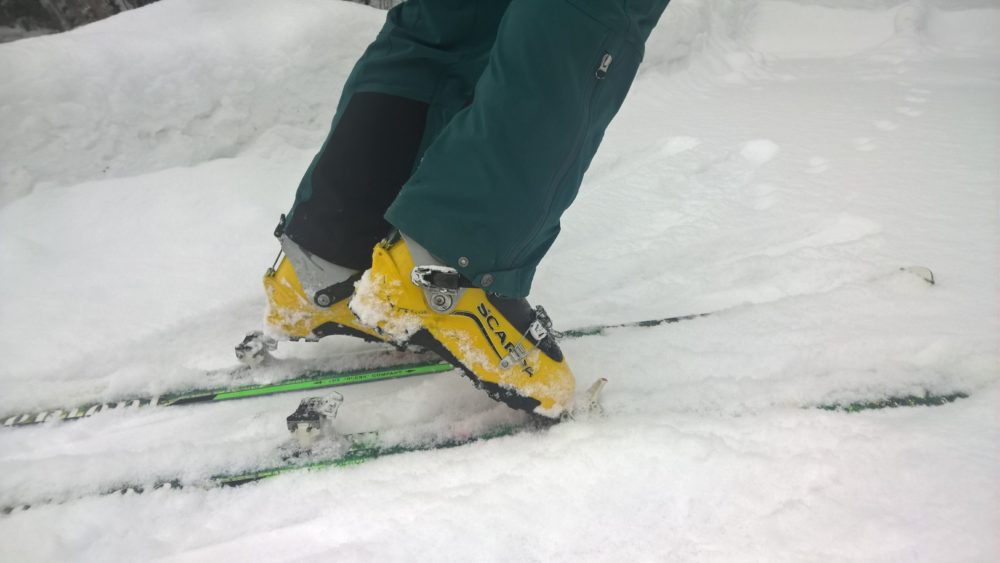
Skis
Skis have gone through a dramatic development since the snowboard threatened to usurp them as the mode of off-piste travel. Although experimentation of the manufacturers does not always make a successful ski touring ski. You do not need anything too flashy for a general purpose touring ski, a classic profile with a flat heel works best. I prefer a ski with a waist of about 90mm under foot as this is wide enough to cope with powder and crust but not too wide to deal with ice. It also gives good performance when skinning uphill. Beware of rockers and extra wide skis. A slight rocker (rise) on thetoe of the ski works but any rocker on the heel will see you fighting to stay centred on the ski as there is no support from the back of the ski. Extra wide skis (over 100mm) are heavier for skinning uphill and not so easy to hold an edge on ice or when skinning on icy slopes. They are great in the powder but less good on the firmer snow types. Super light racing skis are great for the uphill but very difficult to ski with and do not provide a very pleasurable descent, especially in powder snow so I would avoid this type of ski. There is a bewildering choice of skis on the market these days but aski such as the Movement Response, G3 Zenoxide 93, Dynastar Dynafit Broad Peak, or K2 Wayback 88, will serve you well in all situations. The length of ski should be about your height or just shorter.
Bindings
There are basically two types of ski touring bindings the pin binding and the classic step in binding. The pin bindings are generally very light and have a really great walk action whilst the classic step are heavier, but are easier to put and on have a more reliable release mechanism. Pin bindings can be very difficult to put on for the novice, especially in powder snow conditions as the snow hides the pin and holeson the boots. The release mechanism on the pin bindings is not as reliable as the classic step in binding and sometimes they will release without warning or not release during a fall. It is always good to kick the heel of the ski on the ground to test the pins have engaged properlybefore skiing so you don’t get any nasty pre-releases when skiing. Since Dynafit’s pin binding’s patent expired there has been a flood of variants of this style of binding on the market. Some have complicated release mechanism which actually make them as heavy as the classic step in binding, somewhat defeating their main advantage of being light weight. I prefer the proven Dynafit TLT Radical with ski breaks. The classic step in binding such as the Diamir Eagle or Scout is a great choice for the novice ski tourer as they provide robust release mechanisms and are easy to put on and off. Please choose to purchase ski breaks with your bindings as these make the skis easier to put on, safer in the fall situation (than ski leashes) and you are less likely to have your skis shooting down the hillside should they release. The heavy weight step in bindings such as those made by Marker work for small tours to gain access to runs close to the lifts but they are not really designed for ski touring. These should be avoided. All ski touring bindings are not as robust as downhill bindings as they have to offer much more functionality (heel release for the uphill walk). Please be kind to them and don’t abuse them such as using them to kick the snow of your boots!
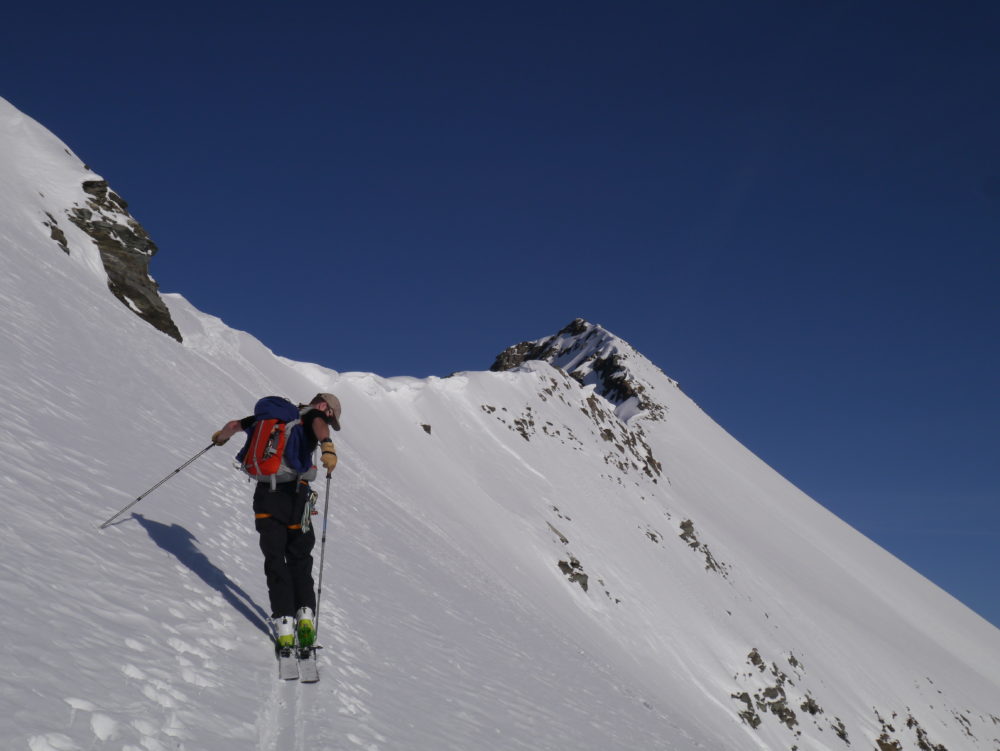
Ski Skins
Skins fall into three categories, nylon based, mohair based and mixed nylon/mohair. The mohair is the best performer but can wear out quickly, the nylon last forever but they have very little glide so the mixed nylon mohair is what most ski tourers use. The skins should be cutto the ski so that only the metal edges are showing when mounted. This is really important in terms of performance especially on icy slopes when you really need that extra grip! Skins normally use a reusable glue which stays on the skin to stick them to the ski but there are other technologies around whereby micro “suction cups” on the skin are used. I prefer to use the tried and well tested glue solutions. It is important to look after your skins by keeping the glue clean by making sure the ski is clean before you put them on and not dropping them on the floor glue side down. Backing plastic to cover the glue on the skins is a great idea, I prefer the soft “cotton” netting style. Goodmakes of skin are Colltex and Pomoco. Iuse the fastening system which is fixed at the toe and clips on the heel as with the toe clip it is easy to kick it off with the other ski when walking. On aging the skins lose their water repellentness so it is importantto wax your skins otherwise they will ball up with snow. A plastic ski scraper and skin wax are important accessories to have when ski touring especially if you are skinning from warm snow to cold snow as. If your skins continually ball up, then a solution is to hot wax your skins by rubbing on ski or skin wax to the skin and ironing them to melt the wax.Please be careful to have the iron set hot enough to melt the wax but not the skins! Repeat the application of wax several times for best results. Skins should last the life of the ski if well cared for. You can get them re-glued and this is best done by a specialist shop as it is a messy process. Kits can be bought for the DIY but be careful as thesolvent to remove the old glue is noxious.
Ski Crampons (Harscheisen)
These are essential for ski touring and must be purchased with the binding to ensure compatibility.
Ski Poles
Fixed length poles are most robust are work well. Big baskets are essential. Collapsible poles are OK but can fail and are more fragile than the fixed pole.
Transceiver
This is is your most important purchase if you are skiing off piste. The most popular manufacturers are Mammut, Ortovox, BCA, and Pieps. I would recommend the Mammut Pulse (or Elements, which is a cut down version of the Pulse) as these are robust and easy to use devices. It isessential that you have had adequate training with your transceiver before you go off piste. The old analogue devices work well together but are not really compatible with the new digital models as there transmitting frequency can drift from the standard 457kz. This affects the search capability of the digital transceivers which have a narrower tolerance for bandwidth drift.
Shovel
There are many shovels on the market, choose one that will compact easily into your back pack and is lightweight to carry

Probe
Again there are many probes on the market. Choose one which you can assemble quickly, is robust and longer then 240cms. The Pieps 260 is a good model.
Helmet
These have become standard issue for piste and off piste skiing. They are light, comfortable and give much needed protection when skiing especially on confined busy pistes. They are still not widely used for ski touring as they are bulky to carry and hot to wear in spring conditions.
Inflatable Airbag Rucksack Systems
These are becoming a standard piece of equipment for off piste skiing and single day ski tours, as they do increase your chances of not being buried in an avalanche and in doing so saves lives. Arc'teryx have a new offering to the market with their VOLTAIR Avalanche Airbag which gets some very good reviews.
Terry Ralphs
ISM Director
Related News Articles

Getting Into & Developing Your Climbing
Indoor bouldering is a great place to start if you want to try climbing for the first time. You can…
Read Article
Petzl 'Alpen Adapt' Crampons
A quick look at the Petzl crampons that I'm using at the moment, and how you can very easily mix…
Read Article
Petzl Crampon Compatability
Mix & match the different Petzl crampon sections, to create the best fit for your boots, and adapt to each adventure.
Read ArticlePrussiking Up A Rope
Following the recent articles around crevasse rescue and snow belays, I wanted to finish up by outlining a standard technique…
Read Article


